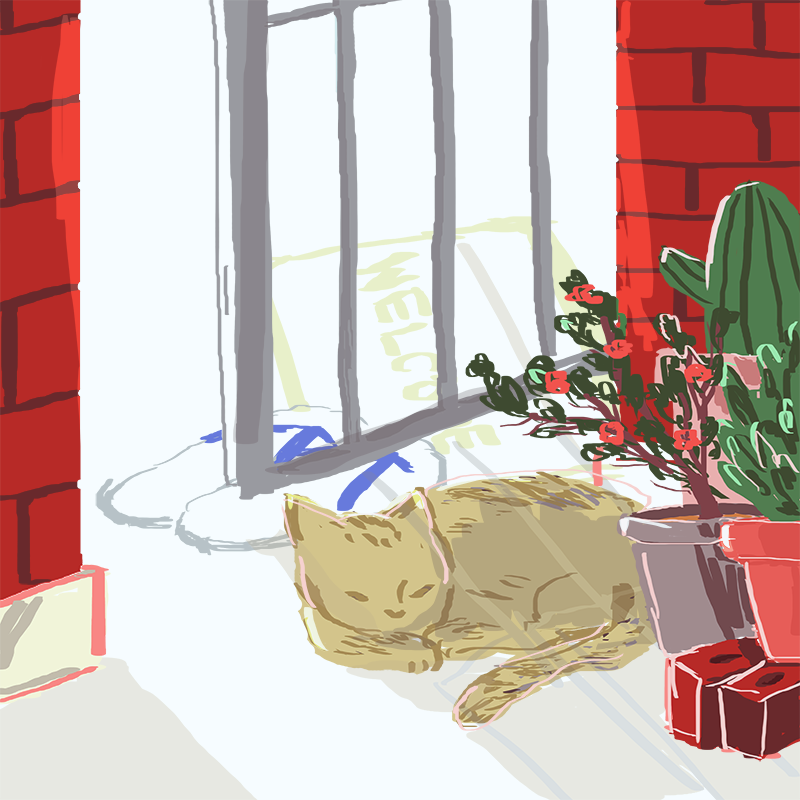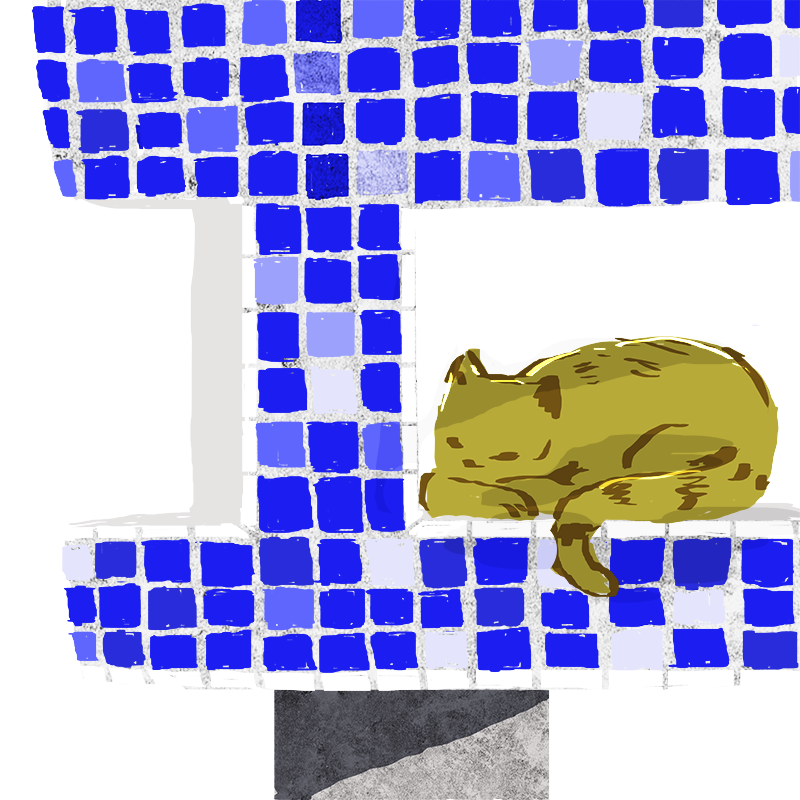
After the first task, I decided to focus on the themes/subjects of local flavour and animals, and came up with an idea to merge them together.
People tend to find comfort in familiarity. Even though we may find the common daily scenes of the Singapore neighbourhood extremely ordinary and nothing out of the special – like HDB void decks, wet marketplaces, kopitiam, etc., they seem to be out of reach in that sterile and prosaic space of the link bridge. Yet, they are often closest to, or feels like a symbol of home. Every corner of the void deck or the daily scene of a busy morning wet market could invoke a sense of familiarity in all (if not most) Singaporeans.









Other than familiarity, I had suggestions from friends before that they thought travelling in another country is something therapeutic, which is agreeable as those are the rare few times we can take our minds away from our work in Singapore and purely have fun. Additionally, we find stories therapeutic as they let us escape into another world. Essentially, the idea of being able to transport your mind somewhere else tends to be therapeutic.
–
By installing images of the heartland environment, I wish to bring an ordinary piece of the heartland, inserting them in the hospital environment, bringing an out-of-ordinary sentiment to the patients, and even staff, who are away from their familiar environment. If they can’t be there, it could be here. Even if one weren’t that familiar with these scenes, I hope that they could find something comfortable in the down-to-earth subjects.
My initial intention of adding animals into the picture was how adorable animals tend to be therapeutic universally. Adorable animals can melt the hardest of hearts and people bond over pets, which were proved to me by the presence of a pet rabbit in my family. Presence of animals can help to soften the environment too.
I also wanted to add a sense of whimsicality to the scenes by adding (domesticated) animals which normally wouldn’t appear in such places. Being surrounded by cute animals sound like a moodlifting experience, like the idea of Okunoshima (Rabbit Island) and the cat islands in Japan. Thus I tried incorporating rabbits into my drafts at first.




second drafts:

with cats

with rabbits
I did the piece with the cats first which wasn’t my initial intention to do so, but eventually I garnered feedback that the presence of the rabbits were not as compatible with the context as compared to the cats. Corresponding to my goal of achieving familiarity, cats would be a comparatively good choice. In this case, I learnt that it would be more important to adhere to what is more logical for the sake of clarity of my intention than what I actually personally want.
During the second round of critique, Michael had suggested that I could focus more on the activities of the cat, how people interact with them and how they possibly interact with the environment. There were also good feedback on the choices of human figures presented.

I snapped this photo at the void deck on my way home during that week, which served as inspiration for my development thereafter.
When I chose to focus on the cat, I realised that even with close-ups, the environment of the void deck are still recognisable. Furthermore, the only time we would watch the stray cats at our void decks up close is when we slow down and go closer, which is the kind of perspective I find suitable for invoking therapeutic sentiments.
sketches



I tried doing it on Illustration instead of Photoshop, where a went for a more organic kind of illustration, but it felt more rigid even though it definitely looks neater.
Reference artists
Nguan – “Singapore” photo series








x x x
Final


The two scenes I ended up with were simply examples of the look and feel it should involved. I picked the mosaic communal chess table as it is easily identifiable even when closed up. Expanding into a series, I hope I could make a series of images in which we could follow the same cat travelling around the void deck.
As Michael said, I could have considered more into how my image is going to work with the view outside of the windows if the background would be transparent. This would certainly enrich the quality of my art, and was something I regrettably didn’t managed to incorporate in my final.
It was also certainly different from our year 1 projects, that we now make design with the consideration of a context and particular audience to serve.
With this, I hope that I will continue to improve in my design thinking and technical skills! I’ve always been interested in cultures, finding it most meaningful to incorporate local culture in my work some way or another. Therefore hopefully, I would also be able to continue exploring more into the local culture or cultures in general.









































 (img source:
(img source: 













